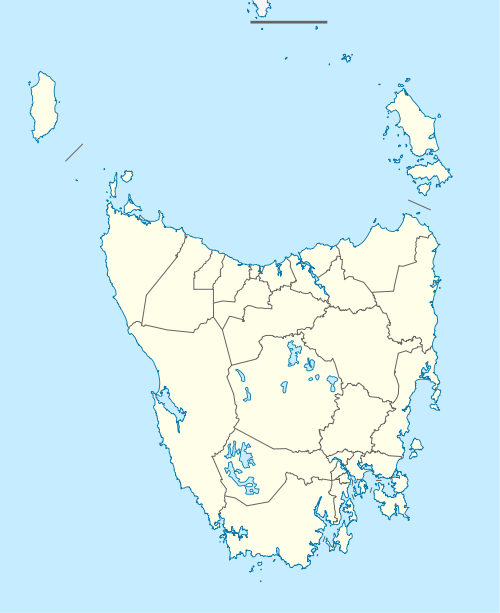Central Plateau Conservation Area
Central Plateau Conservation Area is an animal and plant conservation area in Tasmania, Australia.[1] It is adjacent to the Walls of Jerusalem National Park.
| Central Plateau Conservation Area Tasmania | |
|---|---|
IUCN category VI (protected area with sustainable use of natural resources) | |
 Central Plateau Conservation Area | |
| Coordinates | 41°51′1″S 146°33′28″E |
| Established | 1978 |
| Postcode(s) | 7304 |
| Area | 908.7 km2 (350.9 sq mi) |
| Location | 117 km (73 mi) NW of Hamilton |
| LGA(s) | Central Highlands, Meander Valley |
| Region | Central, Launceston |
| State electorate(s) | Lyons |
| Federal Division(s) | Lyons |
| Managing authorities | Tasmania Parks and Wildlife Service |
| Website | Central Plateau Conservation Area |
| See also | Protected areas of Tasmania |
The Central Plateau of Tasmania is the largest area of high ground in Tasmania. It is bound to the north east by the Great Western Tiers, many hydro electric schemes emanating from rivers that flow to the south - and to the west by Cradle Mountain-Lake St Clair National Park.
Central Plateau is a large rural locality in the local government areas of Central Highlands and Meander Valley in the Central and Launceston regions of Tasmania. Its central point, to the west of Great Lake, is about 117 kilometres (73 mi) north-west of the town of Hamilton. The 2016 census has a population of nil for the state suburb of Central Plateau.[2]
Central Plateau is a confirmed suburb/locality.[3]
Location
Central Plateau surrounds the locality of Cramps Bay, on the eastern shore of Great Lake. The western part of the locality contains most of the Central Plateau Conservation Area, while the eastern part contains Great Lake. The localities of Breona, Doctors Point, Brandum, Reynolds Neck, Liawenee and Miena occupy a corridor between the western part and Great Lake.[4]
The conservation area extends beyond the boundaries of the locality, taking in parts of the localities of Blackwood Creek, Brandum, Breona, Bronte Park, Caveside, Derwent Bridge, Doctors Point, Jackeys Marsh, Lake St Clair, Liawenee, Liffey, Little Pine Lagoon, Mayberry, Meander, Mersey Forest, Miena, Mole Creek, Reynolds Neck, Walls of Jerusalem, and Western Creek.[5]
Road infrastructure
The A5 route (Highland Lakes Road) enters from the north and runs through to the south. Route B51 (Poatina Road) runs through from north-east to south-east.[3][6]
See also
References
- Tasmania. National Parks and Wildlife Service (1984), Walls of Jerusalem National Park and Central Plateau Conservation Area, National Parks and Wildlife Service, retrieved 10 July 2012
- "Placenames Tasmania – Central Plateau". Placenames Tasmania. Retrieved 20 July 2020.
Select “Search”, enter 38974G, click “Search”, select row, map is displayed, click “Details”
- Google (20 July 2020). "Central Plateau, Tasmania" (Map). Google Maps. Google. Retrieved 20 July 2020.
- "Placenames Tasmania – Central Plateau Conservation Area". Placenames Tasmania. Retrieved 20 July 2020.
Select “Search”, enter 38277E, click “Search”, select row, map is displayed, click “Details”
- "Tasmanian Road Route Codes" (PDF). Department of Primary Industries, Parks, Water & Environment. May 2017. Archived from the original (PDF) on 1 August 2017. Retrieved 20 July 2020.
Further reading
- Cullen, Philip J.(1995) Land degradation on the Central Plateau, Tasmania : the legacy of 170 years of exploitation Hobart, Tas. : Earth Science Section, Parks and Wildlife Service, Dept. of Environment and Land Management. ISBN 0-7246-1930-5 Occasional paper (Tasmania. Parks and Wildlife Service) ; no. 34.
- McKenny, Helen. (2000) A guide to vegetation management issues in the Central Plateau region, Tasmania Hobart, Tas. Dept. of Primary Industries, Water and Environment, ISBN 0-7246-6238-3